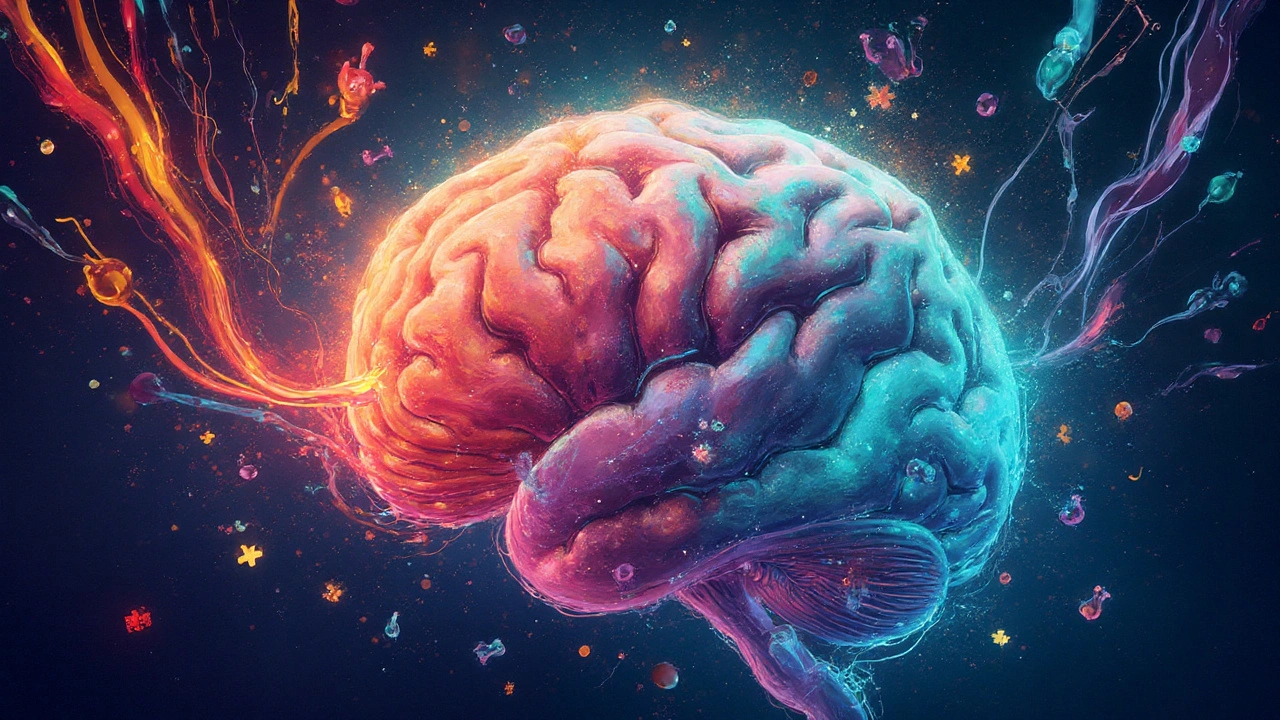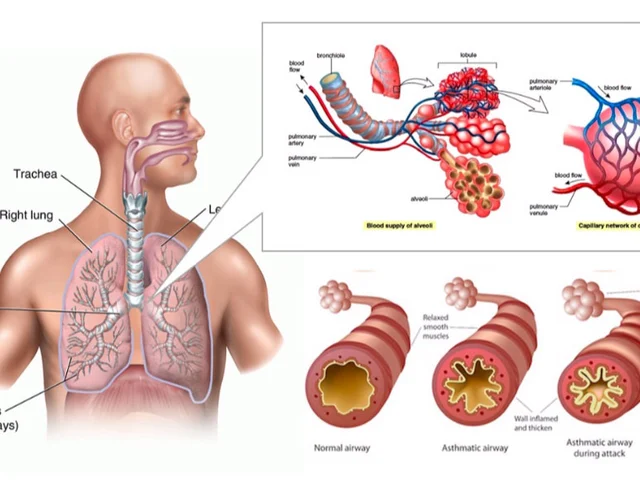Rapid Eye Movement (REM) sleep is a sleep stage characterized by fast eye movements, vivid dreaming, and heightened brain activity, lasting about 20‑25% of total sleep time in adults. While most people think of sleep as a single block, it’s actually a choreography of stages, and REM is the star when it comes to learning and creative insight.
What Happens During REM?
During REM, the brain’s electrical patterns resemble wakefulness-beta waves dominate, and the body experiences atonia (temporary muscle paralysis). This paradoxical state lets us dream hard without acting them out. Neurotransmitters shift dramatically: acetylcholine spikes while norepinephrine and serotonin dip, creating a neurochemical cocktail that primes synapses for re‑wiring.
REM and Memory Consolidation
Memory consolidation is the process by which newly encoded information stabilizes into long‑term storage. Studies using polysomnography have shown that after learning a new motor skill, participants who enjoyed a full night of REM retained up to 30% more of the skill than those deprived of REM. The hippocampus, a hippocampal brain region that tags fresh experiences, replays these experiences during REM, transferring them to cortical networks for permanent storage.
Why REM Fuels Creativity
Creativity often feels like a sudden flash - that’s the brain remixing old ideas while you’re asleep. Dreaming is a subjective experience during REM that blends memories, emotions, and random neural firing. This blend breaks conventional associations, allowing novel connections to surface. A classic example: the chemist August Kekulé dreamed of a snake biting its tail, which inspired the ring structure of benzene.
REM vs. NREM: A Quick Comparison
| Feature | REM | NREM (Stages 3‑4) |
|---|---|---|
| Brain activity | High (beta‑like) | Low (delta waves) |
| Typical duration per cycle | 10‑30min (increasing later) | 20‑40min (deepest early night) |
| Role in memory | Integrates declarative & procedural | Stabilizes declarative facts |
| Dream vividness | Intense, story‑like | Fragmented, thought‑like |
| Physiological markers | Rapid eye movements, atonia | Slow breathing, muscle tone |

Factors That Influence REM Quantity
Age, alcohol, certain medications, and sleep deprivation are the biggest REM thieves. Chronic stress suppresses REM by raising cortisol, which down‑regulates acetylcholine. Conversely, a regular circadian rhythm aligned schedule boosts the natural REM rebound that follows a night of adequate sleep.
Practical Tips to Maximize REM
- Stick to a consistent bedtime - even on weekends.
- Avoid caffeine after 2pm; it delays REM onset.
- Limit alcohol to one drink; excess blocks REM cycles.
- Keep the bedroom cool (≈18°C) to support deeper sleep phases, which in turn protect REM later.
- Incorporate a 20‑minute mindfulness session before bed; it lowers sympathetic tone and encourages smoother REM transition.
When you follow these habits, the brain naturally allocates more night‑time to REM sleep, giving you that extra creative edge for the next day.
Related Concepts Worth Exploring
Understanding REM opens doors to broader topics like neurogenesis - the birth of new neurons that peaks during restorative sleep, and synaptic plasticity - the brain’s ability to rewire connections, both heavily influenced by REM cycles. If you’re curious, diving into how prefrontal cortex regains executive function after REM can illuminate why problem‑solving feels sharper after a good night.
Next Steps for the Curious Mind
Now that you know the science, experiment. Track your sleep with a wearable that reports REM percentage, note any spikes in creative output, and adjust habits accordingly. Over a few weeks you’ll see a pattern: more REM, more “aha!” moments.

Frequently Asked Questions
Can I boost REM without changing my whole lifestyle?
Yes. Small tweaks like cutting caffeine after 2pm, dimming lights an hour before bed, and adding a brief meditation can increase REM by 5‑10% without a full overhaul.
How long does REM need to be for memory benefits?
Research suggests at least 90 minutes of REM across the night is needed to see measurable gains in declarative and procedural memory.
Is dreaming essential for creativity, or just a side effect?
Dreaming serves as the brain’s sandbox. While you can be creative while awake, REM‑induced dreams provide unique, low‑filter combinations that often jump‑start novel ideas.
Do older adults lose REM, and does it affect learning?
Yes, REM proportion declines after 60years, which partly explains slower acquisition of new skills. Regular sleep hygiene can mitigate the drop.
Can alcohol really wipe out REM?
Alcohol suppresses REM in the first half of the night, causing a rebound later. Heavy drinking can cut total REM by up to 40%.







Ryan Torres
September 25, 2025 AT 15:46Wake up, folks! The real agenda behind REM research is a cover‑up for the government’s mind‑control programs 😡🛸. They want us dreaming about whatever they feed us, not about real creativity. Every time you think you’re getting a "aha" moment, remember it’s probably a hidden cue. Stay vigilant and limit exposure to the mainstream sleep trackers – they’re spying on your REM cycles. 🌐🚫
shashi Shekhar
September 26, 2025 AT 17:20Oh great, another "science" article telling us to sleep more. As if my lazy weekends were going to change because some lab coat says REM is magical. Maybe if you actually cared about real life, you’d skip the caffeine after 2 pm, but who am I kidding? 🙄
Marcia Bailey
September 27, 2025 AT 21:06Hey everyone! 🌟 This is a solid rundown – especially the tip about a quick mindfulness session before bed. I’ve seen my own creative flow improve after I added a 20‑minute meditation, so give it a try. Keep tracking your REM and share what works for you! 😊
Hannah Tran
September 29, 2025 AT 00:53Excellent synthesis of the neurophysiological mechanisms – the beta‑like activity and cholinergic surge are critical for synaptic plasticity. Leveraging the REM‑facilitated replay of hippocampal engrams can substantially augment declarative consolidation. Moreover, the interplay between REM and prefrontal executive recovery explains the post‑sleep boost in problem‑solving acuity.
Crystle Imrie
September 30, 2025 AT 04:40Dreams are just brain static, not creativity.
Dhananjay Sampath
October 1, 2025 AT 08:26Interesting points; however, please note that these suggestions should be balanced with personal health constraints; excessive focus on REM may overlook the importance of NREM in overall restorative processes; also, individual variability in circadian rhythms means that a one‑size‑fits‑all approach could be counterproductive; ensure that any sleep‑hygiene changes are introduced gradually; monitor for any adverse effects such as daytime grogginess or mood fluctuations; finally, maintain a consistent sleep‑wake schedule for optimal circadian alignment.
kunal ember
October 2, 2025 AT 12:13Alright, let me unpack this whole REM thing in a way that actually makes sense, because the article, while thorough, kind of skim‑skates over the deeper implications of sleep architecture. First off, the notion that REM is simply a “creative spark” is an oversimplification; it’s more accurate to view REM as a high‑capacity integrative hub where disparate memory traces are re‑associated. During REM, the cholinergic system dominates, which suppresses the noradrenergic tone that normally inhibits the formation of new associations – think of it as removing the brakes on synaptic plasticity. That’s why you get those bizarre dream narratives that can later translate into novel ideas when you’re awake. Second, the hippocampal–cortical dialogue that occurs isn’t just replay; it’s actually a bidirectional exchange, meaning that cortical representations can influence hippocampal reactivation patterns, creating a feedback loop for memory consolidation. Third, there’s a growing body of evidence indicating that REM also supports emotional regulation by decoupling affective responses from raw memory content, which is why after a good night’s REM you often feel less emotionally charged about stressful events. Fourth, the article mentions a 90‑minute REM threshold, but recent polysomnographic data suggest that the distribution of REM bouts across the night matters more than sheer quantity – early night REM bouts are more associated with procedural memory, while later, longer REM periods correlate with creative insight. Fifth, the interaction between REM and the default mode network (DMN) is worth noting; heightened DMN activity during REM may underlie the mind‑wandering aspect of dreaming, providing a fertile ground for divergent thinking. Sixth, lifestyle factors such as chronic stress not only suppress REM but also alter the microstructure of REM, leading to reduced spindle activity, which can impair the fine‑tuning of neural circuits. Seventh, practical interventions like a brief mindfulness session actually increase the proportion of REM by enhancing parasympathetic tone, which in turn supports the physiological conditions favorable for REM onset. Eighth, while the article advises limiting caffeine after 2 pm, it’s also wise to consider the timing of heavy meals, as thermogenesis can delay REM latency. Ninth, the interplay between alcohol and REM is indeed a rebound phenomenon; however, moderate alcohol consumption can sometimes paradoxically increase REM density during the latter half of the night, though the overall quality is dubious. Tenth, wearable technology is useful for estimating REM percentages, but be cautious of algorithmic inaccuracies – raw EEG data are still the gold standard. Eleventh, the developmental trajectory of REM shows a decline after 60 years, which correlates with slower acquisition of new motor skills, underscoring the importance of targeted sleep hygiene in older adults. Twelfth, neurogenesis, particularly in the dentate gyrus, peaks during deep NREM, yet the subsequent REM phase appears to integrate those newborn neurons into existing networks. Thirteenth, the article’s table comparing REM and NREM is accurate, but adding metrics like slow‑wave activity (SWA) could provide a more complete picture of sleep’s restorative functions. Fourteenth, for those looking to maximize creativity, scheduling a brief “nap” that includes a full REM cycle (about 90 minutes) can be a strategic tool, especially for tasks requiring divergent thinking. Finally, remember that consistency is king – a regular sleep schedule not only stabilizes REM proportion but also reinforces the circadian rhythm that orchestrates all sleep stages, ultimately optimizing both memory consolidation and creative insight.
Kelly Aparecida Bhering da Silva
October 3, 2025 AT 16:00Patriots, listen up – the elite want us glued to their agenda, controlling our dreams so we never question them. By protecting our REM, we protect our minds from their indoctrination. Keep your sleep pure, keep America great! 🇺🇸🔥
Michelle Dela Merced
October 4, 2025 AT 19:46Wow, so the secret to genius is just a nap? 😂 Honestly, if dreaming about unicorns made me a Nobel laureate, I'd be in bed all day. But hey, at least I get an excuse for my late‑night pizza runs. 🍕💤
Alex Iosa
October 5, 2025 AT 23:33While the information presented is accurate, it fails to address the broader sociopolitical implications of sleep manipulation. One must consider how corporate interests may influence public health recommendations for REM augmentation.
melissa hird
October 7, 2025 AT 03:20Ah, the classic “science tells us what to do” narrative-how delightfully predictable. One might wonder whether such prescriptive advice is truly in the public’s best interest, or merely a convenient vehicle for cultural conformity. 🤔
Mark Conner
October 8, 2025 AT 07:06Dude, if you’re not getting enough REM, you’re basically a brain dead zombie. Get your sleep game on, or stay stuck in the mud.
Charu Gupta
October 9, 2025 AT 10:53Correction: “brain‑dead” should be hyphenated, and “zombie” is a colloquialism that may undermine scientific discourse. Nonetheless, the core advice remains valid. 😊